
The famous Spartans are one of the most admired peoples of Ancient History. Sparta is undoubtedly one of the best examples of states where the individual submits to it for the good of the community, based on sacrifice, discipline and order. Despite the scarce archaeological record that this left us, the Greek writers transmitted to us many details of their society, where war was one of their main occupations.
As an example, the excellent film that the American Zack Snyder left us in 2006. His "300" transported us to the battle of Thermopylae (480 BC) where a group of Spartans led by their king Leonidas I faced the powerful Persian army.
It is important to point out the great legacy for the knowledge of the Spartans that the classical writers left us. Among the most outstanding, the local poets Tyrtaeus or Alcman, the tireless traveler Pausanias, also a native of Sparta itself, or outstanding historians such as Thucydides and the father of Western history Herodotus.
The origin of Sparta.
The polis of Sparta appears on the southern slopes of the Peloponnese. A place inhabited in the second millennium BC. C. by the Mycenaean culture, in the province that the Greeks called Laconia, hence its inhabitants, as well as Spartans, were known as Lacedemonians. This polis, like others, has its birth in the so-called dark age of Greece, between the 13th-8th centuries B.C. An epic birth is usually assigned to him, by the hand of Menelaus, the Mycenaean general who went to Troy to save the honor of his wife Helena, and who had his residence in Menelaión, a colony located 5 km from the city of Sparta.
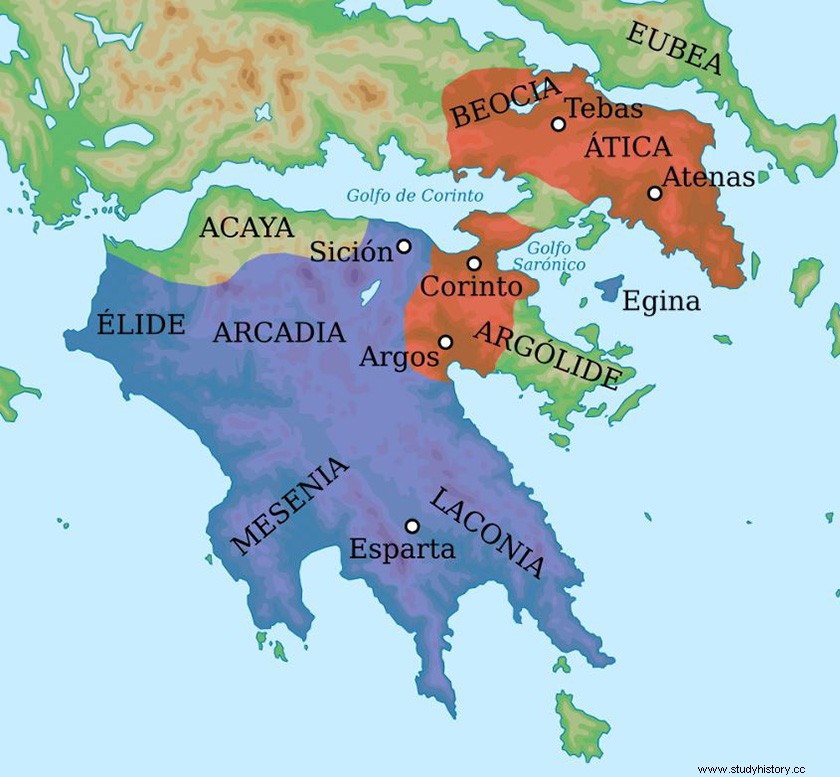
The Peloponnese Peninsula
But the Spartans don't seem to have a Mycenaean background. This culture is annihilated during this dark age for unknown reasons, either natural catastrophes, or the action of the so-called Peoples of the Sea. In the place where Sparta is founded, substrata of the indigenous cultures that had been subjected to Mycenaean power appear and together to them, a people arrived from the Greek islands, the Dorians. This point is also not exempt from traditional Hellenic legends. According to which, the arrival of the Dorians was motivated by the invitation to recover the lands of the Peloponnese, by the heirs of Heracles, previously expelled by the Mycenaeans. From that moment the Spartan kings will become descendants of the mythical Hercules.
It should be noted that the Dorians were initially occupying the upper part of the Eurotas river, to progressively descend through the fertile valley and subjugate the indigenous people, who were subordinated to the new Lords of war. It was a time of gestation, both for new villages and for new social layers.

Archaeological site of Sparta
The Messenian Wars.
This entire process was not exempt from bloody internal struggles, historiographically known as the Messenian Wars. Spartan aristocrats facing their new agricultural serfs, known since then as helots. In the second of these great wars, the Messenian peasants had the collaboration of several polis from the north of the Peloponnese, fearful of the enormous power that Sparta was beginning to hoard. The solution was the first Peloponnesian League, where the signatories were the representatives of almost all the poleis of that peninsula, and where Sparta already occupied a preponderant role, it was the seventh century BC
It is curious how the Spartan poets told us about life in ancient Sparta, especially between the Messenian Wars in the middle of the 7th century BC. C. Since through his poems we observe a great contrast with the rigor of the Spartan society of later centuries. These poets present us with an open society, which looks to the sea and trades with the Aegean islands and with Asia Minor, from where rich fabrics and jewels were exported. His men prepare the hunting dogs, turning them into the best trained in ancient Greece. Poets, such as Alcman or Tirteo, occupy prominent positions in society and politics, thanks to which musicians, artists, craftsmen or great goldsmiths arrive in Sparta. The polis is filled with new buildings, such as sanctuaries, theaters and music schools, without forgetting its athletes who returned from the Olympic Games loaded with olive wreaths.
Things began to change after the second of the Messenian Wars. The fear of neighboring polities, or a Messenian uprising, could be behind the new vision of where Spartan society should be heading. That was the time when the Spartan Constitution or Great Rhetra was written. , normally attributed to Lycurgus, a character that seems mythological, who received it at the Oracle of Delphi from the hands of Apollo. But according to historiography, it must have been written after a resounding defeat of Sparta during the Second Messenian War, at the hands of the king of Argos.
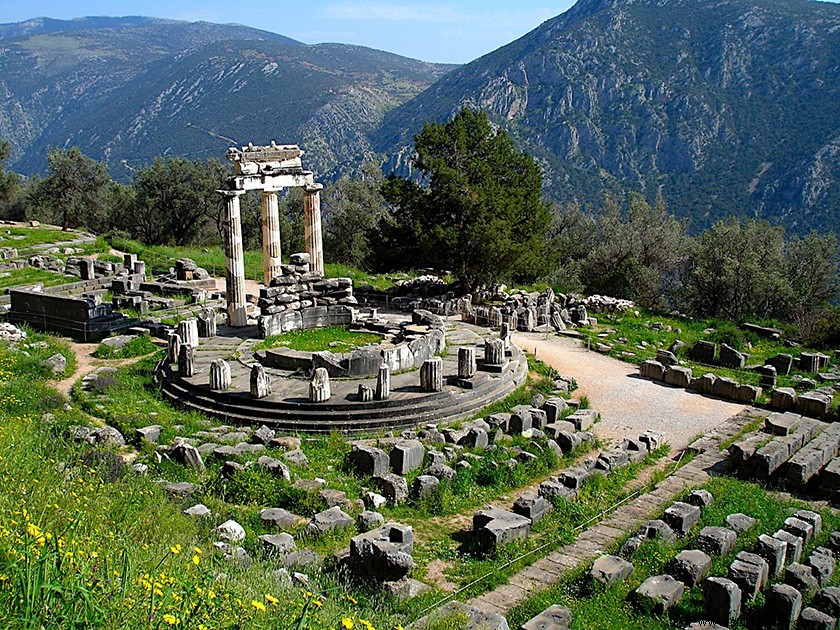
Oracle of Delphi
The institutions of Sparta.
The Spartan institutions emanated from the Great Rhetra, by the way, despite some novelties, they were not very different from those of the rest of the Greek poleis.
Diarchy.
The visible head of the Spartan state was represented by this monarchical institution, which in itself is the main difference with the rest of the Greek poleis. Two kings were theoretically at the head of Sparta, this aspect was not very common in the ancient world, in Europe we only see it represented in some Germanic peoples, and in certain periods of Roman culture.
The Spartan kings, in some ways reminiscent of the eastern monarchs. Especially for their divine character and for being military leaders. Both could proclaim war, and both could go to it, either together or separately. Among his main prerogatives was to get rid of the harsh Spartan education, or to have personal protection as a "praetorian guard". The institution was hereditary, the position passed to the first male child born during the mandate of his father, in case the king died and he was not of legal age, the position of regent was in the hands of the closest adult relative familiarly .
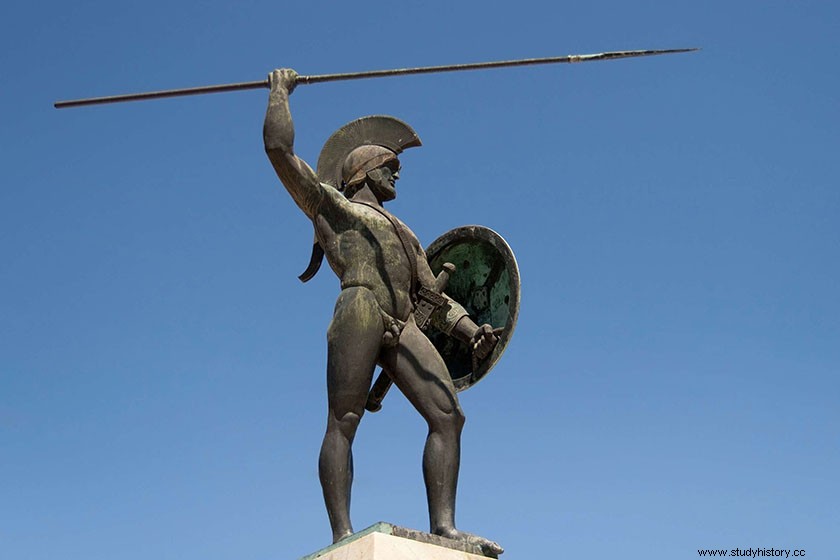
Leonidas I, in Sparta
But the Spartan kings had many limitations on their power. Such were these, that, according to their Athenian neighbors, the Spartan kings were little more than window dressing. They did not have any economic or judicial power. Furthermore, they could be criticized, deposed, and even exiled from Sparta. Its main limitation came from the Eforado, an institution that we will learn about later. The ephors they put the kings to the test every nine years, if at that time a shooting star appeared in the sky, it was a sign that the king was not fit, or that he had made a serious mistake, from that moment he was suspended from duty and taken in front of the Oracle of Delphi. Finally, it should be noted in this section that the kings of Sparta were losing importance throughout history, until they disappeared as an institution in the 3rd century BC. C.
The Eforado.
It was composed of five magistrates called Ephors, elected by the Popular Assembly each year. The oldest was the “eponymous ”, whom we can place as a kind of president of the institution.
Its origin was uncertain and a source of discussion among historians. There are different hypotheses, but it seems that they emerged between the 7th and 6th centuries BC, gradually gaining importance within the system, until they became the most important institution in Sparta.
We can consider them as the true government, and their powers reached all fields of the political structure of Sparta. Its main mission was to ensure that all men and women fully complied with the Spartan Constitution. Due to which they had legislative, judicial powers, and especially in economic matters.
The Council of Elders (Gerousía )
According to most historians, the oldest institution in Sparta. Its origins sink into the history of this society. Its members were known as “gerontes ”, and since the knowledge of the Constitution, their number was fixed. In total there were 30, including the two kings. The rest were chosen from among the members of the old family tribes. They had to be over 60 years old, free from military service, respectable and prestigious people within the community, the position was for life.
His main task was to prepare the laws that had to be approved in the People's Assembly. His main power resided in the judicial and penal section, imposing fines and judging, especially in the civil sphere of relations between citizens.

Trial of Phryné, one of the most famous of Ancient Greece
The Popular Assembly (Apella )
We leave for last the institution of the people, or rather of the most fortunate of Spartan society. This assembly was made up of full-fledged citizens, known as the “homoioi ”, and they had to be at least 30 years old. They met monthly and coinciding with the full moon. Decisions were not made by majority, there were no votes, and everything that was not approved by popular acclamation was useless.
In the assemblies, presided over by the ephors at the proposal of the gerones , debated on a large number of aspects that concerned the people of Sparta. The laws proposed by the Gerosía, the appointment of the army generals, or of the ephors themselves and elderly , and even about the possible granting of freedom for the helots as a reward for his military services.
The social classes of Sparta.
Spartan society was complex and iron, despite the fact that it is usually assigned three large classes, there is a lack of information about the relationship between them, and especially about the intermediate social states that surely they existed between the three.
Spartiates.
Each one of the 300 who came to Thermopylae that day. We can take this license to put face and eye on them. The Spartiates they were full-fledged citizens, the famous “homoioi ”, forced from birth to the iron Spartan education, destined to become warriors of Sparta.
To belong to this class it was essential to have a Spartan father and mother. In addition to showing that they could afford to participate in community meals for homoiois , known in ancient Greece by the name of Sissatía . His job was to maintain a strict relationship with his peers, hence these meals were held regularly every day in peacetime. Of course, the rest of the time they had to spend preparing for war, the only occupation they had, since, despite owning land, they did not work it. Note that they had no private or family life, they did marry, but with the sole intention of fathering strong and healthy children, so that they would become Spartan warriors.
Periecos.
The social class of Ancient Sparta most unknown to the sources. They were the so-called “inhabitants of the periphery ”, belonged to the Spartan community, but without being considered citizens of Sparta.
At first glance, their position may seem ideal, their professions were liberal, that is, merchants, artisans or self-employed farmers. His economic contribution to the state was essential for it. Despite living without political privileges, they should not participate in war or in the harsh Spartan education. They only had one caveat, some were members of the Spartan navy, presumably thanks to their skills as sailors.
In short, the relationship between the periecos and the Spartan state was to be one of convenience. The first lived in a kind of controlled freedom and the state could use them in case of economic need. It seems evident that the greatest fortunes in Sparta were in the hands of this social class, of which there is no evidence of serious social problems.
Strands.
The slaves of Sparta. The phrase has its intention, since the slaves did not belong to any lord, in this case Spartiata . It is true that they worked for them, but they only had to deliver a part of the harvest, that is, they were paid in kind, whether it was wine, wheat or oil. They were citizens assigned to the land and at the service of the state, only the state could grant them freedom. By obtaining the latter, after their military services as hoplite soldiers, they did not become Spartiates , his status was intermediate and known as “neodamodes ”, dedicating themselves to exercising activities similar to the periecos .
In the long history of Sparta, there were two geographically well-differentiated groups of helots . On the one hand, the descendants of the Laconians , clearly submitted to the Spartan state. On the other, the Messenians , a social group with its own identity that has always sought emancipation from Sparta.
Spartan education (Agogé )
Contemplated in the Great Rhetra, it is one of the best known aspects of the Spartans. As noted above, the Spartiates They were from birth under the tutelage of the state. They were raised alone by their mothers until they were seven years old, from then on they were taken to schools for their training in groups separated by age. From the age of twelve and until the end of their education they were under the supervision of a personal educator called “paidonomos ”.

They received basic training in writing, reading, music or science. But the main subject was to prepare them for war, they learned tactics, they were trained as the best athletes, and they were instructed in the handling of all weapons. To do this, they were subjected to harsh corporal punishment and strict personal control. According to Plutarch many died under the whip of their instructor.
Those who managed to complete their Spartan education were full citizens, Spartiates . They were given their dowry of land, to economically finance their social life in common with the rest of their equals who awaited them, the meals of brotherhood and their constant physical preparation for war. Some, the luckiest, entered select groups, such as the royal guard known as "hippies", but in general they became part of a social life far removed from the rest.
Today we want to recommend these two readings by Professor Carlos García Gual. The best expert of this country regarding the Greek world.
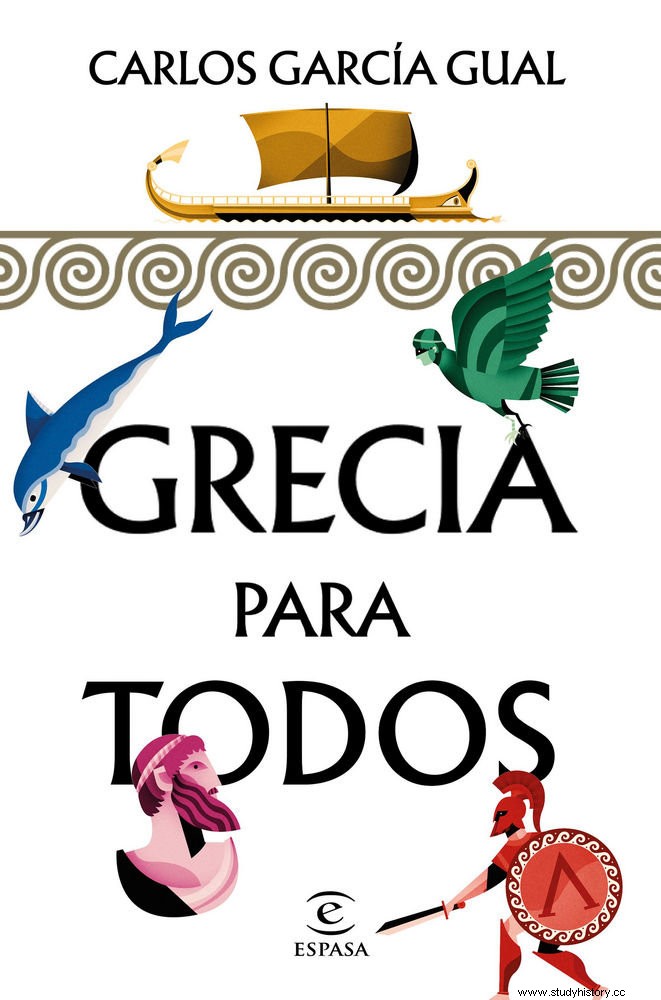
Buy. Greece for everyone.
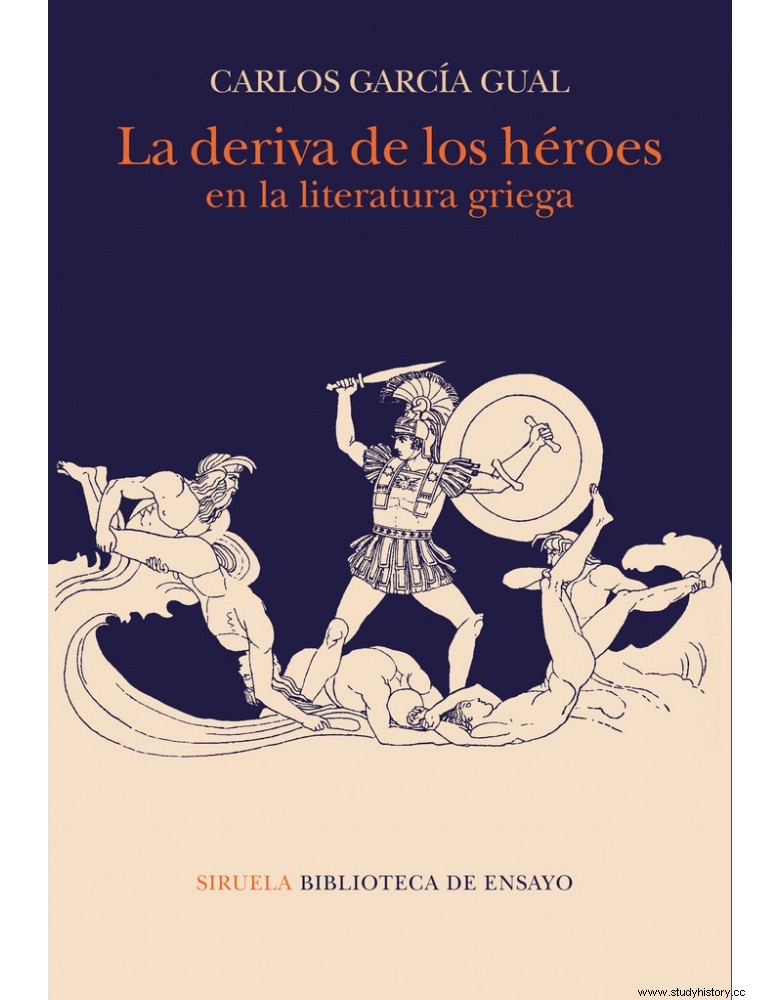
Buy. The drift of heroes.
More Info:
Universal History II:the Greek world, Pilar Fernández Uriel, Ed. Uned, 2007
Esparta, Javier Murcia Ortuño, Ed. Alianza, 2017
